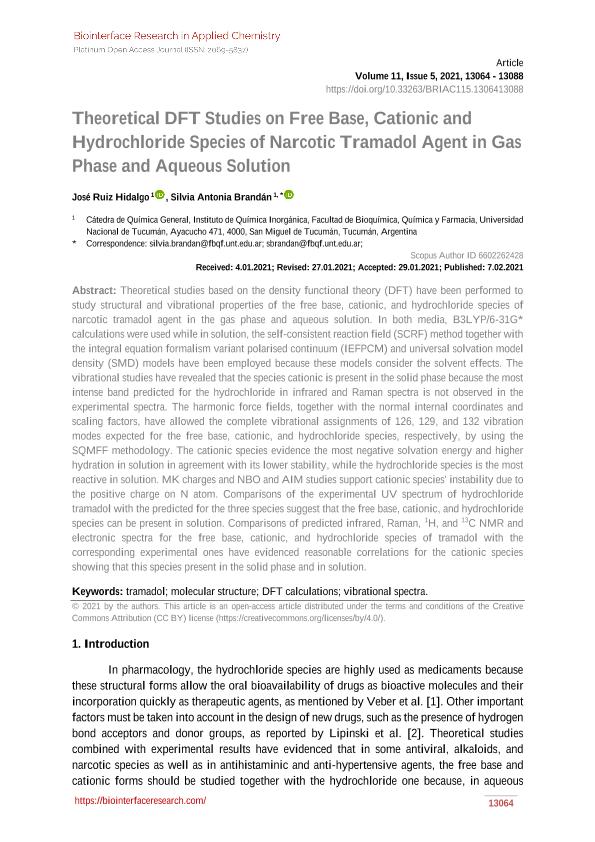Artículo
Theoretical DFT studies on free base, cationic and hydrochloride species of narcotic tramadol agent in gas phase and aqueous solution
Fecha de publicación:
02/2021
Editorial:
AMG Transcend Association
Revista:
Biointerface Research in Applied Chemistry
ISSN:
2069-5837
Idioma:
Inglés
Tipo de recurso:
Artículo publicado
Clasificación temática:
Resumen
Theoretical studies based on the density functional theory (DFT) have been performed to study structural and vibrational properties of the free base, cationic, and hydrochloride species of narcotic tramadol agent in the gas phase and aqueous solution. In both media, B3LYP/6-31G* calculations were used while in solution, the self-consistent reaction field (SCRF) method together with the integral equation formalism variant polarised continuum (IEFPCM) and universal solvation model density (SMD) models have been employed because these models consider the solvent effects. The vibrational studies have revealed that the species cationic is present in the solid phase because the most intense band predicted for the hydrochloride in infrared and Raman spectra is not observed in the experimental spectra. The harmonic force fields, together with the normal internal coordinates and scaling factors, have allowed the complete vibrational assignments of 126, 129, and 132 vibration modes expected for the free base, cationic, and hydrochloride species, respectively, by using the SQMFF methodology. The cationic species evidence the most negative solvation energy and higher hydration in solution in agreement with its lower stability, while the hydrochloride species is the most reactive in solution. MK charges and NBO and AIM studies support cationic species' instability due to the positive charge on N atom. Comparisons of the experimental UV spectrum of hydrochloride tramadol with the predicted for the three species suggest that the free base, cationic, and hydrochloride species can be present in solution. Comparisons of predicted infrared, Raman,1H, and13 C NMR and electronic spectra for the free base, cationic, and hydrochloride species of tramadol with the corresponding experimental ones have evidenced reasonable correlations for the cationic species showing that this species present in the solid phase and in solution.
Palabras clave:
DFT CALCULATIONS
,
MOLECULAR STRUCTURE
,
TRAMADOL
,
VIBRATIONAL SPECTRA
Archivos asociados
Licencia
Identificadores
Colecciones
Articulos(CCT - NOA SUR)
Articulos de CTRO.CIENTIFICO TECNOL.CONICET - NOA SUR
Articulos de CTRO.CIENTIFICO TECNOL.CONICET - NOA SUR
Citación
Ruiz Hidalgo, José; Brandan, Silvia Antonia; Theoretical DFT studies on free base, cationic and hydrochloride species of narcotic tramadol agent in gas phase and aqueous solution; AMG Transcend Association; Biointerface Research in Applied Chemistry; 11; 5; 2-2021; 13064-13088
Compartir
Altmétricas




